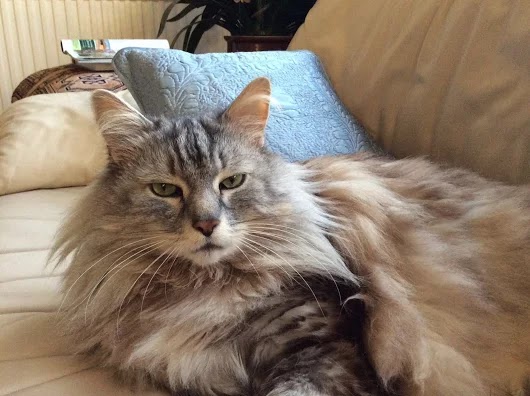She was counting how many chickens I have to cook and she said her guilao 鬼佬 friend can eat half a chicken and she told me last evening she has invited someone else.
Bêh zam goi 白斬鷄 is very easy to cook. I use 1.5 kg Oakham chicken from Marks and boil it for 10 minutes in 3 litres of boiling water, which has ginger, onion and black peppercorns, and leave it in the hot liquid for an hour. At the end of this hour, plunge the cooked chicken into ice cold water until the chicken skin firms up. One 1.5 kg chicken should be able to feed four people.
Real Chinese people would cook the chicken for a shorter time and soak it for no more than 45 minutes in the hot boiling liquid. However, there is a tendency for people in this country to eat chicken which is a bit more cooked.
The chicken could be deboned and sliced after half an hour. The bones could be returned into the stock and boil for a further hour, to extract the maximum flavour from the bones.
 |
| 白斬鷄 |
My friend has invited her Malaysian friend who loves chilli hot food. I have prepared a special dipping sauce for Margaret, the lady who cooked the Malaysian prawns with minced ginger and garlic, two teaspoons of 潮洲辣椒油 Chaozhao chilli oil, 1 tsp of brown sugar, half a teaspoon of sea salt, a little sake and juice of half a lime. I just invented this sauce and I have no idea if this sauce is delicious or not.
 |
| Jiang'rong 薑蓉 and chilli sauce for Margaret |
I will be serving the Bêh zam goi 白斬鷄 with pulao rice. Wash and soak 600 grams [3.5 cups] of basmati rice in salted water for 20 minutes. Drain the salted water and leave to drain for 20 minutes. Fry the rice grains in shallots flavoured oil and minced garlic and ginger. Then boil the rice in 2 litres of seasoned chicken stock for 6 to 7 minutes until the rice is almost cooked. At the 6th minute, add fried shallots to the almost cooked rice and give a good gentle stir. Drain all the excess liquid and then place the almost cooked rice in a rice cooker to finish the cooking, and pour 50 ml of prepared saffron water and 75 ml of hot chicken stock.

The pulao rice was very delicious - imagine 3.5 cups of rice [600 grams] eaten by four people.


































